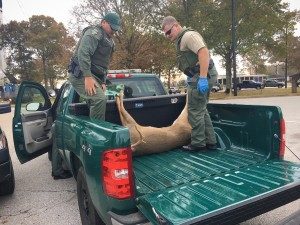 I implore you to read your state hunting regulations booklet this and every season. You’ll keep up to date on any and all rule changes, especially as pertain to Chronic Wasting Disease (CWD).
I implore you to read your state hunting regulations booklet this and every season. You’ll keep up to date on any and all rule changes, especially as pertain to Chronic Wasting Disease (CWD).
I’ll be hunting mule deer in Montana in a few weeks, so reading this new guidance from the state was eye-opening:
Scent usage: If you intend to use scents to either mask human odor or as an attractant for deer and elk, you should be aware that the Montana Fish and Wildlife Commission adopted regulations in 2021 on which ones you can use. You are safest if you use artificial scents, but you can also use scents certified by the Responsible Hunting Scent Association. You can identify these with the DPP or RtQUIC labels on them.
Carcass transport and disposal: The head and skull (of a deer or elk) containing brain material and the spinal cover must be left in the field unless it is being transported for meat processing or taxidermy. If not left in the field, all carcasses and parts must be disposed of in a Class II landfill. Carcass parts, including brain, eyes, spleen, lymph glands, and spinal cord material, must be bagged and disposed of in a Class II landfill or may be left at the kill site.
Dumping carcasses or parts in other places is illegal, unethical, and can spread CWD and other diseases. Because CWD occurs in many portions of the state, this disposal requirement applies to all deer, elk, and moose carcasses wherever in the state they are harvested by hunters or as vehicle-killed salvage. Remember, state law makes it unlawful to import deer, elk, or moose harvested in other states unless the brain and spinal tissue has been removed from the skull before you return to Montana.
No matter where you live or hunt, CWD laws on transporting deer carcasses and disposing of bones vary widely and change often. Read the regs so you don’t inadvertently break a new law, and do your part to stop this deadly deer disease.




